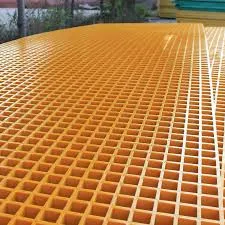
-
 Afrikaans
Afrikaans -
 Albanian
Albanian -
 Amharic
Amharic -
 Arabic
Arabic -
 Armenian
Armenian -
 Azerbaijani
Azerbaijani -
 Basque
Basque -
 Belarusian
Belarusian -
 Bengali
Bengali -
 Bosnian
Bosnian -
 Bulgarian
Bulgarian -
 Catalan
Catalan -
 Cebuano
Cebuano -
 China
China -
 China (Taiwan)
China (Taiwan) -
 Corsican
Corsican -
 Croatian
Croatian -
 Czech
Czech -
 Danish
Danish -
 Dutch
Dutch -
 English
English -
 Esperanto
Esperanto -
 Estonian
Estonian -
 Finnish
Finnish -
 French
French -
 Frisian
Frisian -
 Galician
Galician -
 Georgian
Georgian -
 German
German -
 Greek
Greek -
 Gujarati
Gujarati -
 Haitian Creole
Haitian Creole -
 hausa
hausa -
 hawaiian
hawaiian -
 Hebrew
Hebrew -
 Hindi
Hindi -
 Miao
Miao -
 Hungarian
Hungarian -
 Icelandic
Icelandic -
 igbo
igbo -
 Indonesian
Indonesian -
 irish
irish -
 Italian
Italian -
 Japanese
Japanese -
 Javanese
Javanese -
 Kannada
Kannada -
 kazakh
kazakh -
 Khmer
Khmer -
 Rwandese
Rwandese -
 Korean
Korean -
 Kurdish
Kurdish -
 Kyrgyz
Kyrgyz -
 Lao
Lao -
 Latin
Latin -
 Latvian
Latvian -
 Lithuanian
Lithuanian -
 Luxembourgish
Luxembourgish -
 Macedonian
Macedonian -
 Malgashi
Malgashi -
 Malay
Malay -
 Malayalam
Malayalam -
 Maltese
Maltese -
 Maori
Maori -
 Marathi
Marathi -
 Mongolian
Mongolian -
 Myanmar
Myanmar -
 Nepali
Nepali -
 Norwegian
Norwegian -
 Norwegian
Norwegian -
 Occitan
Occitan -
 Pashto
Pashto -
 Persian
Persian -
 Polish
Polish -
 Portuguese
Portuguese -
 Punjabi
Punjabi -
 Romanian
Romanian -
 Russian
Russian -
 Samoan
Samoan -
 Scottish Gaelic
Scottish Gaelic -
 Serbian
Serbian -
 Sesotho
Sesotho -
 Shona
Shona -
 Sindhi
Sindhi -
 Sinhala
Sinhala -
 Slovak
Slovak -
 Slovenian
Slovenian -
 Somali
Somali -
 Spanish
Spanish -
 Sundanese
Sundanese -
 Swahili
Swahili -
 Swedish
Swedish -
 Tagalog
Tagalog -
 Tajik
Tajik -
 Tamil
Tamil -
 Tatar
Tatar -
 Telugu
Telugu -
 Thai
Thai -
 Turkish
Turkish -
 Turkmen
Turkmen -
 Ukrainian
Ukrainian -
 Urdu
Urdu -
 Uighur
Uighur -
 Uzbek
Uzbek -
 Vietnamese
Vietnamese -
 Welsh
Welsh -
 Bantu
Bantu -
 Yiddish
Yiddish -
 Yoruba
Yoruba -
 Zulu
Zulu
grp dual lamination products for enhanced durability and ...
Enhanced Durability with GRP Dual Lamination Products
In today's competitive market, the demand for high-performance materials that offer superior durability has never been higher. Among the various options available, Glass Reinforced Plastic (GRP) dual lamination products have emerged as a preferred choice for industries looking to enhance the longevity and resilience of their applications. This article explores the benefits and features of GRP dual lamination technology and why it is gaining traction across multiple sectors.
GRP dual lamination involves the use of two layers of glass-reinforced polyester, which are bonded together to create a composite material that benefits from the strengths of both layers. The outer layer typically consists of a resin-rich finish that provides excellent surface protection, while the inner layer delivers robust structural integrity. This combination not only boosts the mechanical properties of the product but also enhances its resistance to environmental factors, such as moisture, chemicals, and UV radiation.
One of the standout features of GRP dual lamination products is their lightweight nature. Compared to traditional materials like metal or concrete, GRP is significantly lighter, making it easier to transport and install. This attribute is particularly advantageous in applications such as construction, automotive, and marine industries, where minimizing weight can lead to increased efficiency and cost savings.
grp dual lamination products for enhanced durability and ...

Another significant advantage of GRP dual lamination is its exceptional resistance to corrosion. Unlike metals, which can succumb to rust and degradation over time, GRP is inherently resistant to a wide range of corrosive substances. This characteristic is especially beneficial in harsh environments, such as wastewater treatment plants, chemical manufacturing facilities, and coastal applications where exposure to saltwater is prevalent. The longevity of GRP products helps reduce maintenance costs and extends the lifespan of structures, thereby offering superior value to businesses.
In addition to strength and durability, GRP dual lamination products are also versatile in terms of design. They can be molded into complex shapes and customized to meet specific project requirements. This flexibility enables architects and engineers to create innovative solutions that can withstand both aesthetic and functional demands.
Furthermore, the manufacturing process of GRP dual lamination can be tailored to meet various industry standards and specifications, ensuring compliance with safety and performance criteria. This adaptability makes it an ideal choice for a wide range of applications, from industrial components to bespoke architectural features.
In conclusion, the adoption of GRP dual lamination products represents an evolution in engineering materials, offering a combination of durability, lightweight properties, corrosion resistance, and design flexibility. As industries continue to seek innovative solutions that meet the challenges posed by harsh environments, GRP dual lamination will undoubtedly play a pivotal role in shaping the future of durable materials. With its many advantages, it stands as a testament to the progress being made in material science, promising enhanced performance for years to come.









